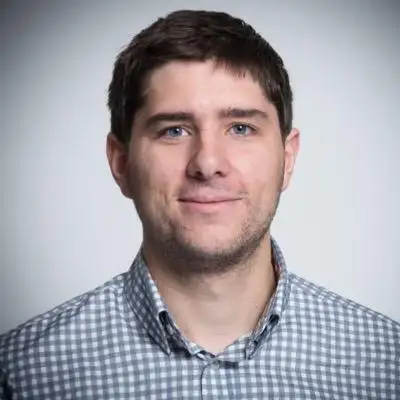Keeping the lights on part 1: How do we make more energy?
The world is in a state of flux when it comes to energy production. Australian coal is being bought up by China as fast as it can be mined, Europe is coming to terms with Russian gas supplies being a bargaining chip in international politics, and the US is grappling with how to produce more energy whilst meeting green targets and keeping people in mining areas employed.
It’s a tough balancing act. So how can countries realistically become more energy independent in a sustainable way with the tech that’s viable today? This is the first of a two part special. Next time we’ll be looking at how to make the most of the energy we already have.
We start off by meeting Doug Kothe, a Nuclear Scientist who, until recently, headed up the Exascale computing team at the Oak Ridge National Laboratory in the US. He's hugely excited by recent developments in the field, but is also a realist who understands that Fusion energy is still a way off being commercially viable and scaleable.
So what are the alternatives? Professor Patricia Thornley from Aston University is Director of the Energy & Bioproducts Research Institute. They look at the energy potential of waste biomass - sewage and agricultural by-products - to provide not only electricity, but also materials such as plastics, and fuels such as gasoline, diesel and even jet fuel and hydrogen. Their research shows enormous promise - up to 45% of the UK's energy needs could be provided in a carbon-neutral or even net negative way simply by processing agri-waste. In many parts of the world, close to 100% is achievable.
But what about countries where land is at a premium? There's alternatives here, too. Carnegie Clean Energy is an Australian-based engineering firm who are perfecting their CETO wave-generation technology. They use submerged bouys pulling on cords to generate energy in an environmentally non-destructive way. As Carnegie CEO Jonathan Fievez explains, the difference in their technology is that the generators can pull on their own cords to raise, lower or angle themselves. That lets them both generate more electricity, and protect themselves from the bad weather and turbulent seas which have traditionally made the tech difficult to implement commercially.
They do this via an ingenious AI tool called reinforcement learning, whereby an AI learns to control the bouys by being rewarded for the amount of energy they generate. Testing is currently ongoing, but early results suggest a 20-40% performance improvement with less wear and tear, which could be a lifeline for remote and island communities currently relying on diesel generators.
Driving this AI technology is Hewlett Packard Enterprise Labs, who have been working in partnership with Carnegie. Christian Temporale and Maria Ridruejo have been implementing the project for HPE, and are excited by the progress that's been made. They believe that machine learning techniques such as this could make significant improvements in other technologies, such as 'smart' wind turbines, and developing better forms of solar panels.
It’s a tough balancing act. So how can countries realistically become more energy independent in a sustainable way with the tech that’s viable today? This is the first of a two part special. Next time we’ll be looking at how to make the most of the energy we already have.
We start off by meeting Doug Kothe, a Nuclear Scientist who, until recently, headed up the Exascale computing team at the Oak Ridge National Laboratory in the US. He's hugely excited by recent developments in the field, but is also a realist who understands that Fusion energy is still a way off being commercially viable and scaleable.
So what are the alternatives? Professor Patricia Thornley from Aston University is Director of the Energy & Bioproducts Research Institute. They look at the energy potential of waste biomass - sewage and agricultural by-products - to provide not only electricity, but also materials such as plastics, and fuels such as gasoline, diesel and even jet fuel and hydrogen. Their research shows enormous promise - up to 45% of the UK's energy needs could be provided in a carbon-neutral or even net negative way simply by processing agri-waste. In many parts of the world, close to 100% is achievable.
But what about countries where land is at a premium? There's alternatives here, too. Carnegie Clean Energy is an Australian-based engineering firm who are perfecting their CETO wave-generation technology. They use submerged bouys pulling on cords to generate energy in an environmentally non-destructive way. As Carnegie CEO Jonathan Fievez explains, the difference in their technology is that the generators can pull on their own cords to raise, lower or angle themselves. That lets them both generate more electricity, and protect themselves from the bad weather and turbulent seas which have traditionally made the tech difficult to implement commercially.
They do this via an ingenious AI tool called reinforcement learning, whereby an AI learns to control the bouys by being rewarded for the amount of energy they generate. Testing is currently ongoing, but early results suggest a 20-40% performance improvement with less wear and tear, which could be a lifeline for remote and island communities currently relying on diesel generators.
Driving this AI technology is Hewlett Packard Enterprise Labs, who have been working in partnership with Carnegie. Christian Temporale and Maria Ridruejo have been implementing the project for HPE, and are excited by the progress that's been made. They believe that machine learning techniques such as this could make significant improvements in other technologies, such as 'smart' wind turbines, and developing better forms of solar panels.
